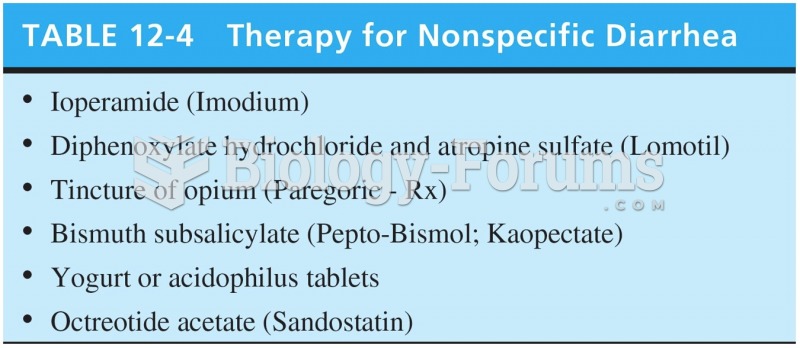|
|
|
The types of cancer that alpha interferons are used to treat include hairy cell leukemia, melanoma, follicular non-Hodgkin's lymphoma, and AIDS-related Kaposi's sarcoma.
Since 1988, the CDC has reported a 99% reduction in bacterial meningitis caused by Haemophilus influenzae, due to the introduction of the vaccine against it.
Inotropic therapy does not have a role in the treatment of most heart failure patients. These drugs can make patients feel and function better but usually do not lengthen the predicted length of their lives.
Signs and symptoms of a drug overdose include losing consciousness, fever or sweating, breathing problems, abnormal pulse, and changes in skin color.
Not getting enough sleep can greatly weaken the immune system. Lack of sleep makes you more likely to catch a cold, or more difficult to fight off an infection.
 In Hindu marriages, the roles of husband and wife are firmly established. Neither this woman, whom I ...
In Hindu marriages, the roles of husband and wife are firmly established. Neither this woman, whom I ...
 An OBD-II active test. The PCM opens the EGR valve and then monitors the MAP sensor and/or engine ...
An OBD-II active test. The PCM opens the EGR valve and then monitors the MAP sensor and/or engine ...





